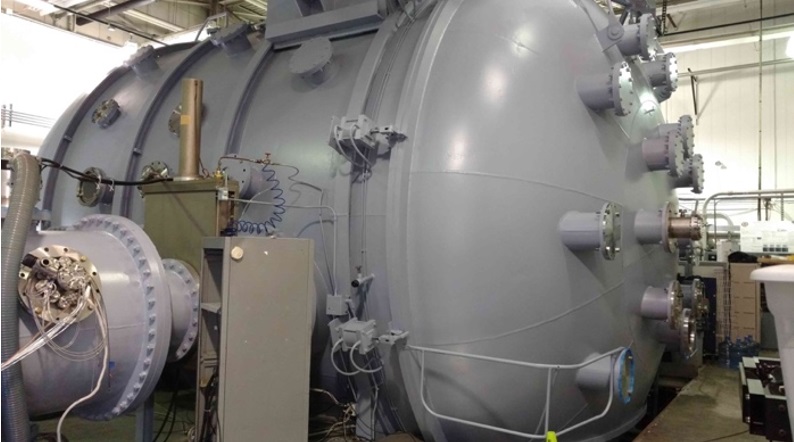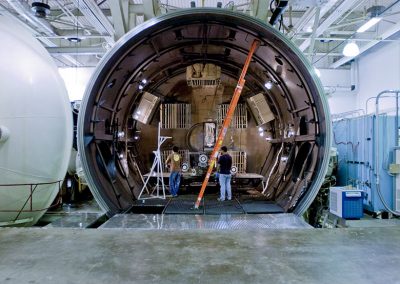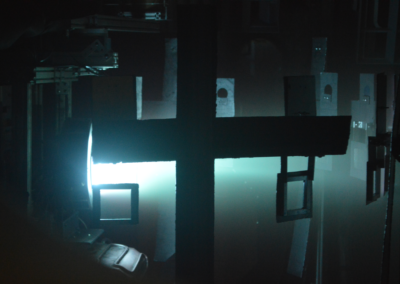Research Area
Facility Effects and Spacecraft-Thruster Interactions
Erosion is the key life-limiting factor for all extant thrusters. Recent advances have seen thruster erosion rates plummet. While this drastically improves mission lifetime, it also means that the high energy plasma environment around the device may now have time to erode spacecraft components apart from the thruster itself, such as solar panels, radiators, antennae and plasma diagnostics. Understanding how the thruster plasma interacts with the spacecraft is thus critical to integrating the next generation of high power, long-life thrusters with the next wave of deep-space missions.
Characterizing erosion requires lengthy ground-based tests. However, thruster performance is known to differ between ground testing in a vacuum chamber and in-space operation. To better predict thruster behavior, a more complete understanding of the effects of facility back-pressure and electrical environment on thruster operation is needed.



